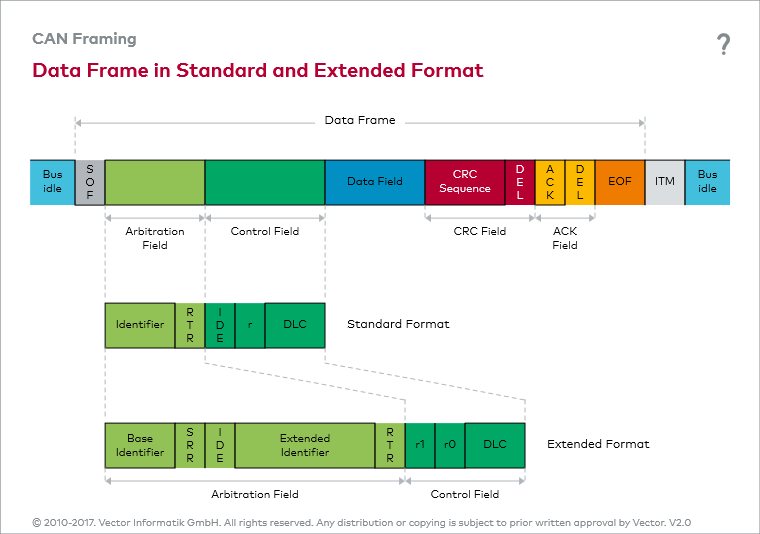- Overview
- 1. Introduction
- 2. CAN Communication
- 3. CAN Framing
- 4. CAN Bus Access
- 5. CAN Data Protection
-
6. CAN FD
- Motivation
- Advantages and Consequences
- New Types of Frames
- Details of a CAN FD Frame
- Distinguishing CAN from CAN FD Frames
- Compatibility of CAN and CAN FD Controllers
- Accelerated Transmission
- Indicating too many Errors
- Length of the Data Field
- More Data with the same Security
- Changed Rules for Bit Stuffing and CRC Calculation
Addressing
Message addressing
Communication in the CAN network is based on content-related addressing. It is not the CAN nodes that have identifiers, but rather the data and remote frames are identified (identifier — ID). So, all CAN messages can be received by every CAN node (broadcasting). Each receiver is independently responsible for selecting CAN messages. Such receiver-selective addressing is very flexible, but it requires that each receiver filters the received CAN messages (acceptance filtering).
Standard and extended format
The user has the option of choosing between two message formats: standard and extended format. The two formats differ in the length of the identifier. In standard format the ID has 11 bits. In extended format the ID has 29 bits.
In contrast to the ID in standard format, the ID in extended format consists of two components, the base ID and the extended ID. Between these two components are the IDE (Identifier Extension) and SRR (Substitute Remote Request) bits.
A dominant IDE bit indicates that a CAN message is in standard format. A recessive IDE bit indicates that the CAN message is in extended format. In extended format the SRR bit, which is always transmitted as recessive, replaces the RTR bit in standard format. In extended format the first two bits of the control field (r0 and r1) are irrelevant; both are transmitted as dominant.

